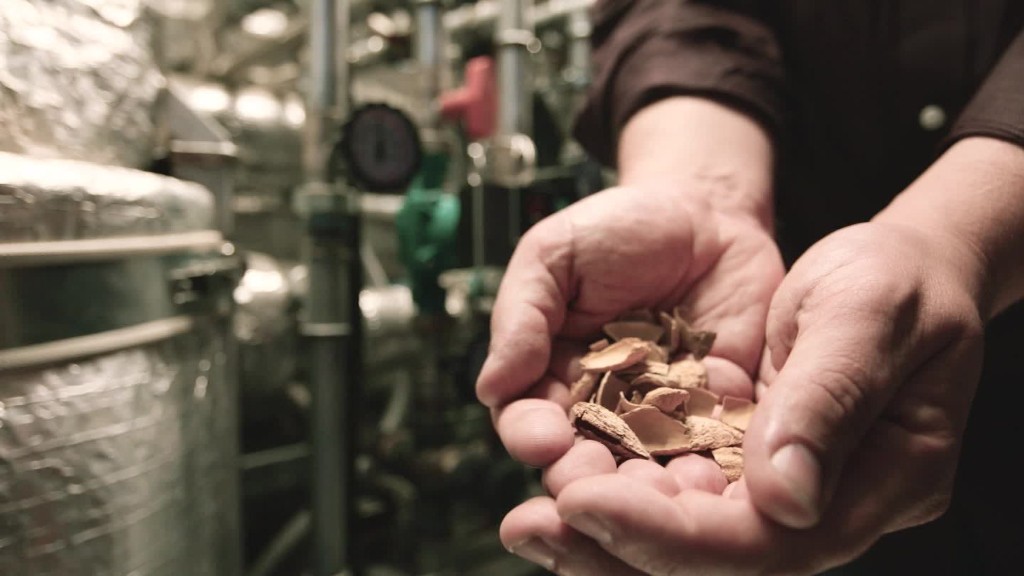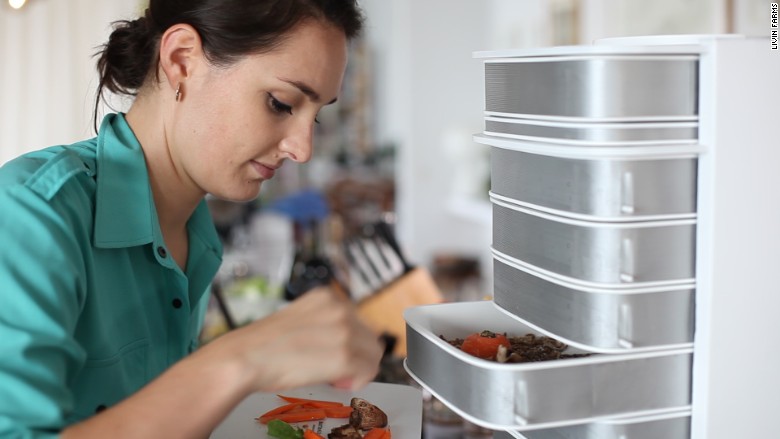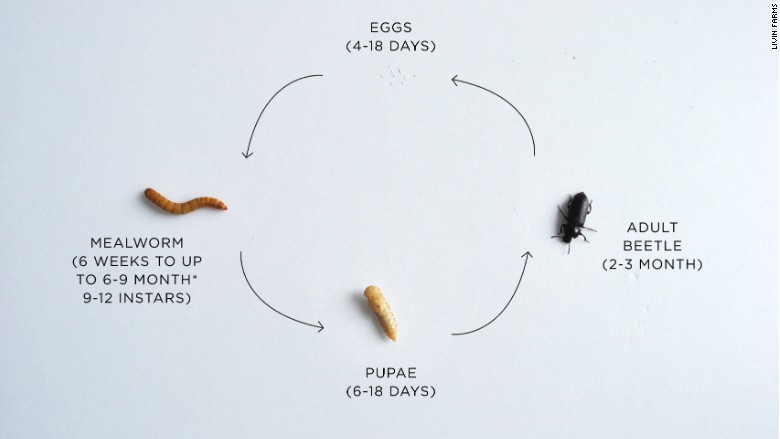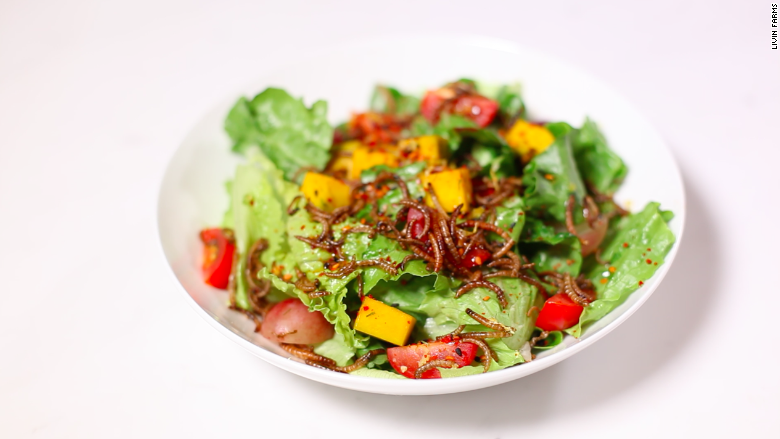
On Katharina Unger's desk is an unassuming stack of slotted drawers.
At first glance, it looks like a fancy filing system. But on closer inspection, the bottom drawer contains some surprising inhabitants: fresh mealworms.
Unger is the founder and CEO of LIVIN Farms, a sustainable food company that manufactures DIY mealworm farms.
Dubbed the Hive, her desktop devices are part of a recent push to embrace insects as a sustainable, nutritious protein source.
According to a report by the UN's Food and Agriculture Organization, the world will be home to 9 billion people by 2050 -- and insects' ability to provide food at a low environmental cost will be "fundamental to the survival of humankind."
Bugging out
Originally from Austria, 26-year-old Unger grew up on a small farm where her family raised its own cattle, chicken and vegetables.
"Moving to Hong Kong was a shock," Unger told CNNTech. "To feed such a dense city, it occurred to me that the scale was incredible."
While working on her thesis on food integrity in 2013 at the University of Vienna, the Fulbright scholar investigated the industrial-scale production of meat.
"I was blown away by how destructive our food system is," she recalls. "I investigated how we are going to feed the world ethically in the future."

She stumbled upon insects as a sustainable food alternative and realized their potential.
Entomophagy -- or the practice of eating insects -- has played a role in societies in South America, Southeast Asia and Africa for many years. Around the world, about 2 billion people consume insects regularly.
Related: Can this university save bluefin tuna from extinction?
Unger became a kind of insect ambassador -- giving speeches and TEDx Talks, even building large-scale fly farms in Hawaii and California.
After being accepted into a Hardware Accelerator program in Shenzhen, China, in 2013, Unger embarked on her ultimate goal: to make insects a staple in every diet.
In 2015, LIVIN Farms launched a crowdfunding campaign on Kickstarter that raised $145,000 -- enough to bring the desktop farm to life.
How it works
Drawing on her background as an industrial engineer, Unger designed the Hive to be sleek and easy-to-use -- an intuitive accessory that easily fits inside a home or office.
"We want it to look clean, and have people see and experience that it's hygienic, it's modern, it's healthy and it's nothing to be afraid of," she explains.
The Hive has eight slots, and each drawer is a different part of the mealworm's simple life cycle.

It starts at the top drawer where darkling beetles -- a.k.a. adult mealworms -- lay eggs. The eggs hatch into baby mealworms, or larva, which thrive on kitchen scraps and oats.
Once they reach harvest size, some of the eggs molt into cocoon-like pupae while others turn into mealworms.
The pupae turn into beetles, which lay eggs, and start the life cycle again.
As the beetles evolve from egg to larva to pupae, they automatically tumble down to the next tray thanks to a built-in a vibration system. By the time the insect gets to the bottom drawer, it's a fresh, ready-to-cook mealworm.
The initial batch of worms will take up to 14 weeks to harvest, but from there, the tabletop farm will produce about 100-200 insects per week -- as long as the mealworms are well fed.
Unger herself eats mealworms about once a day when she's not traveling -- usually roasting them as a snack, packing them into "meat" balls, or sprinkling them over salad.
"They're neutral, which is why we chose them as a species for growing," she explains.
"You can mix them into all kinds of recipes. They are slightly nutty in taste. A lot of people say it taste like peanuts or like pumpkin seeds when you roast them."

If Unger's initial orders are any indication, there is a growing demand for alternative food sources. LIVIN Farms aims to deliver its first 300 farms to customers in 2017, priced at $649 each.
The bigger picture
The agriculture industry is one of the world's largest contributors of greenhouse gases, accounting for 24% of global greenhouse gas emissions.
Insects offer an alternative source of protein. They require significantly less water and land, and since they feed off waste, there's no need to transport feed.
Related: This milkshake is made with 96 crickets
Plus, there's variety, with more than 1,900 types of insects that are suitable for consumption -- all rich in protein, amino acids and vitamins.
"It's about regaining the pride that insects are a great food," says Unger. "We want to get away from the ick factor -- we want it to be considered normal."

